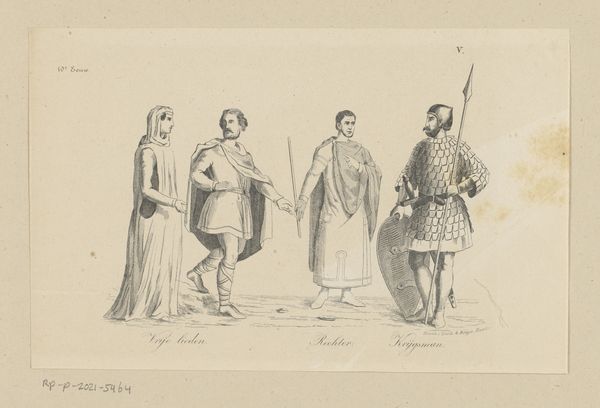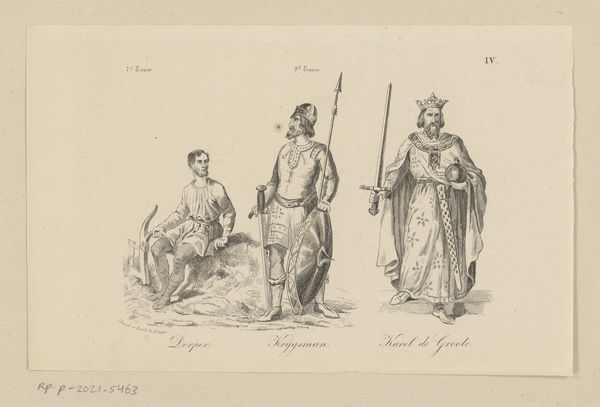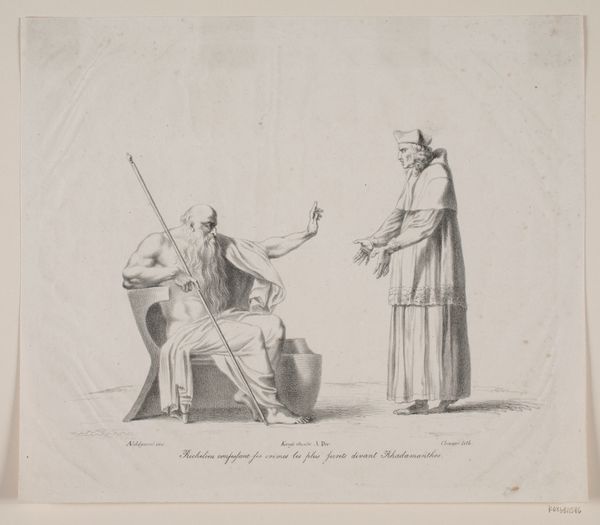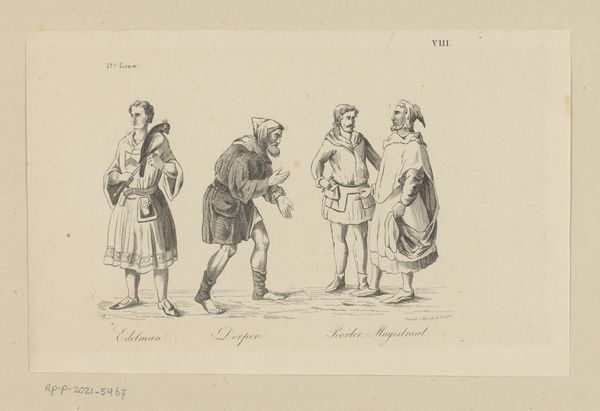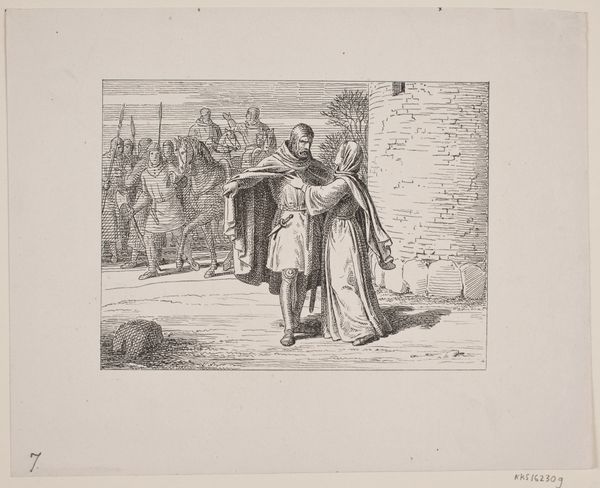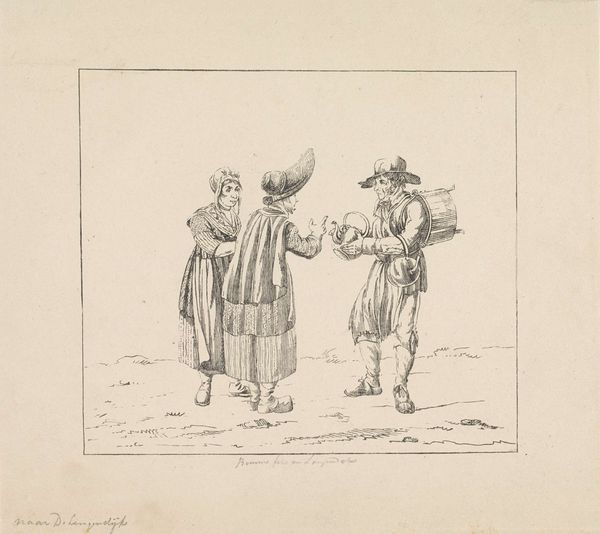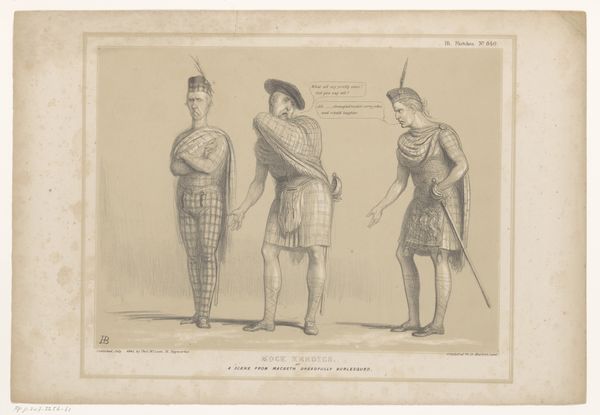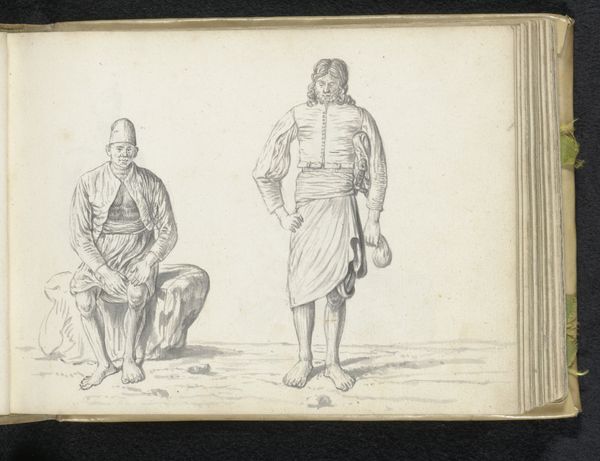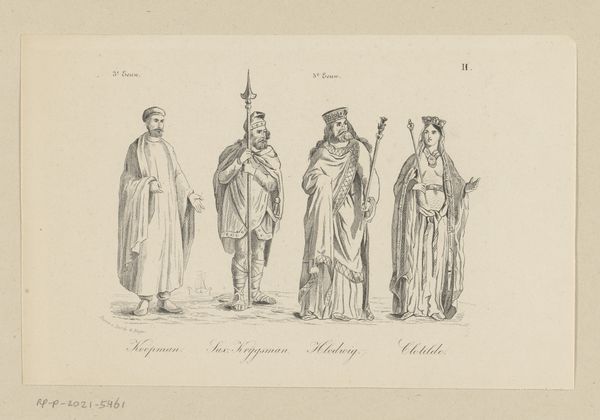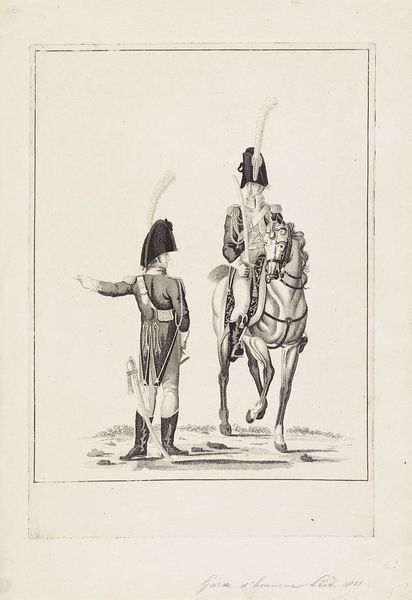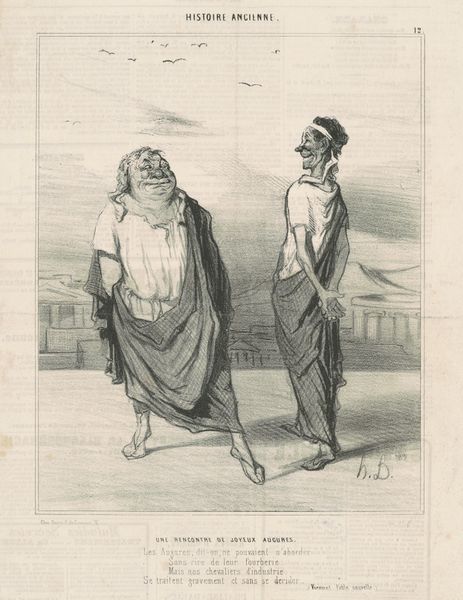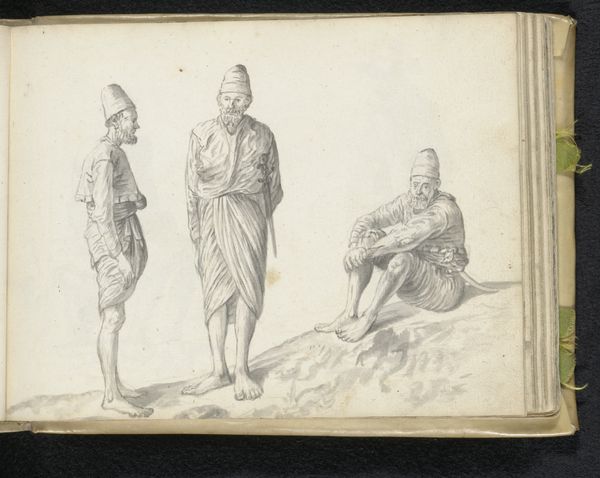
drawing, lithograph, print
#
portrait
#
drawing
#
lithograph
# print
#
history-painting
#
academic-art
Dimensions: 270 mm (height) x 347 mm (width) (bladmaal)
Curator: Let's turn our attention to this lithograph titled "Hakon-Olaf, Oehlenschlägers Hakon Jarl," created in 1857 by Constantin Hansen. What are your immediate impressions? Editor: There’s a lightness to the piece despite its historical subject matter. The artist’s use of line to delineate form— the delicate hatching gives a real sense of movement to the figures, especially in Olaf’s outstretched arm and swirling cloak. Curator: This lithograph is actually based on characters from Adam Oehlenschläger's play "Hakon Jarl". Hansen delves into the political turmoil and religious transition of Norway, where Hakon represents the old Norse paganism, and Olaf heralds the arrival of Christianity. Editor: Interesting. Tell me more about how Hansen uses the formal aspects to represent this contrast? I notice the distinct poses; Hakon is firmly grounded, a closed form with a shield. In contrast, Olaf gestures outward, more exposed. Curator: Precisely! It’s not merely a portrait. The artist uses historical figures as vehicles to discuss conflicting belief systems. The characters become symbolic representations of cultural upheaval during a period of religious reformation. It highlights how dominant cultural narratives shifted and identities were reformed through the introduction of Christianity. Editor: So, the composition echoes this dichotomy. We have stasis versus kinesis, a formal tension underlining thematic struggle. Note, also, how the tonal range is masterfully handled to give dimension to the costumes while adding atmospheric depth. Curator: Absolutely. And Hansen’s choice of lithography, allows the images to become more accessible. His prints helped disseminate and promote certain nationalist and moral ideals during this period, shaping how the populace viewed their history. He's not just portraying figures but molding cultural memory. Editor: It's clear the work functions beyond the aesthetic realm. The historical weight merges beautifully with formal technique to craft a powerful symbolic landscape. Thanks for clarifying that contextual relevance. Curator: Likewise. It is a great example of art reflecting its era, which is also something beyond just an appealing picture.
Comments
No comments
Be the first to comment and join the conversation on the ultimate creative platform.
